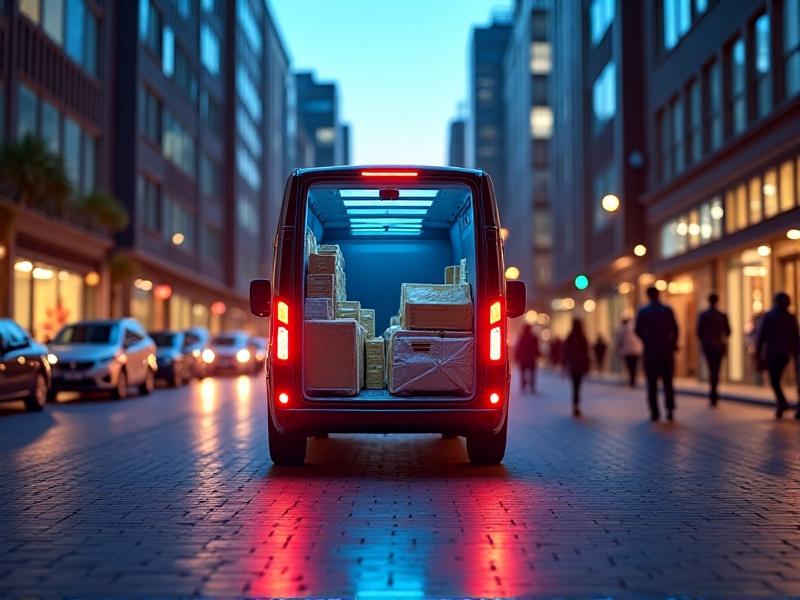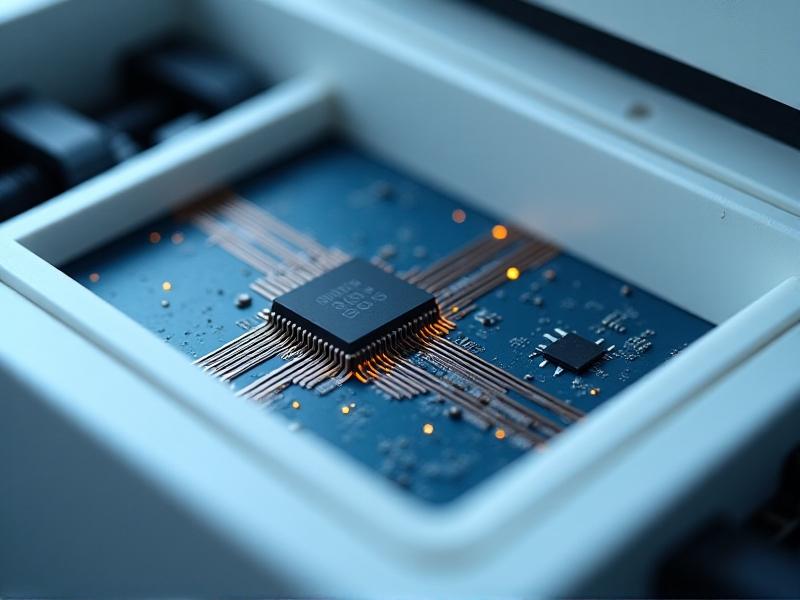GPS-Enabled Cooler Tracking During Transit
The Evolution of Cooler Tracking: From Basic to GPS-Enabled Solutions
For decades, coolers have been an essential part of transporting perishable goods, ensuring that food, beverages, and medical supplies remain at the right temperature. However, tracking these coolers during transit has historically been a challenge. Traditional methods relied on manual logs and basic temperature monitoring, leaving room for human error and inefficiency. The advent of GPS-enabled cooler tracking has revolutionized this process, offering real-time visibility and control over the location and condition of coolers.
GPS technology has been around for years, but its integration into cooler tracking systems is a relatively recent development. By embedding GPS modules into coolers, businesses can now monitor their assets with unprecedented accuracy. This evolution has been driven by the increasing demand for transparency and accountability in supply chains, particularly in industries like food delivery, pharmaceuticals, and logistics.

With GPS-enabled coolers, companies can track the exact location of their shipments, receive alerts if a cooler deviates from its planned route, and ensure that temperature-sensitive goods remain within safe limits. This level of precision not only reduces the risk of spoilage but also enhances customer satisfaction by providing accurate delivery estimates.
How GPS-Enabled Cooler Tracking Works
At its core, GPS-enabled cooler tracking relies on a combination of GPS technology, cellular networks, and cloud-based software. The GPS module embedded in the cooler communicates with satellites to determine its precise location. This data is then transmitted via cellular networks to a central platform, where it can be accessed by users in real time.
One of the key components of this system is the integration of temperature sensors. These sensors continuously monitor the internal temperature of the cooler and send alerts if the temperature falls outside the predetermined range. This dual functionality ensures that both the location and condition of the cooler are monitored simultaneously.

Cloud-based software plays a crucial role in making this data accessible and actionable. Users can log into the platform from any device to view the location of their coolers, check temperature logs, and receive notifications. Some systems even offer advanced features like route optimization, predictive analytics, and integration with other supply chain management tools.
By combining these technologies, GPS-enabled cooler tracking provides a comprehensive solution for businesses that need to monitor their assets in transit. Whether it’s a small local delivery or a complex international shipment, this system ensures that coolers are tracked with precision and efficiency.
Benefits of GPS-Enabled Cooler Tracking for Businesses
The adoption of GPS-enabled cooler tracking offers numerous benefits for businesses across various industries. One of the most significant advantages is improved efficiency. By knowing the exact location of their coolers, companies can optimize delivery routes, reduce fuel consumption, and minimize delays. This not only saves time and money but also enhances the overall customer experience.
Another key benefit is enhanced accountability. With real-time tracking and temperature monitoring, businesses can ensure that their products are handled properly throughout the supply chain. This is particularly important for industries like pharmaceuticals, where even minor deviations in temperature can render products unusable. By maintaining strict control over their coolers, companies can reduce the risk of spoilage and avoid costly losses.

GPS-enabled cooler tracking also provides valuable data that can be used to improve operations. By analyzing tracking and temperature data, businesses can identify patterns, uncover inefficiencies, and make informed decisions. For example, if a particular route consistently experiences delays, companies can adjust their schedules or explore alternative routes.
Finally, this technology enhances customer trust and satisfaction. By providing accurate delivery estimates and ensuring that products arrive in perfect condition, businesses can build stronger relationships with their customers. In today’s competitive market, this level of service can be a significant differentiator.
Applications of GPS-Enabled Cooler Tracking in Different Industries
GPS-enabled cooler tracking has a wide range of applications across various industries. In the food delivery industry, for example, this technology ensures that perishable goods like fresh produce, dairy, and meat remain at the correct temperature during transit. This is crucial for maintaining food safety and preventing spoilage, which can lead to significant financial losses and reputational damage.
The pharmaceutical industry also benefits greatly from GPS-enabled cooler tracking. Many medications and vaccines require strict temperature control to remain effective. By using GPS-enabled coolers, pharmaceutical companies can monitor the temperature of their shipments in real time and take immediate action if any issues arise. This is particularly important for high-value or life-saving products, where even a small deviation in temperature can have serious consequences.
In the logistics and transportation industry, GPS-enabled cooler tracking helps companies manage their fleets more effectively. By tracking the location and condition of their coolers, logistics providers can optimize routes, reduce fuel costs, and ensure timely deliveries. This is especially important for long-haul shipments, where coolers may be in transit for extended periods.
Even the hospitality and event planning industries can benefit from this technology. For example, caterers can use GPS-enabled coolers to ensure that food and beverages remain fresh and safe during transport to events. This not only enhances the quality of the service but also reduces the risk of foodborne illnesses.
Overall, GPS-enabled cooler tracking is a versatile solution that can be adapted to meet the needs of various industries. Its ability to provide real-time visibility and control makes it an invaluable tool for businesses that rely on temperature-sensitive shipments.
Challenges and Considerations in Implementing GPS-Enabled Cooler Tracking
While GPS-enabled cooler tracking offers numerous benefits, there are also challenges and considerations that businesses must address when implementing this technology. One of the primary challenges is the initial cost. GPS modules, temperature sensors, and cloud-based software can be expensive, particularly for small businesses with limited budgets. However, it’s important to weigh these costs against the potential savings and benefits, such as reduced spoilage and improved efficiency.
Another consideration is the need for reliable cellular connectivity. GPS-enabled coolers rely on cellular networks to transmit data, so areas with poor coverage can pose challenges. Businesses must ensure that their coolers are equipped with robust communication modules and that they operate in regions with adequate network coverage.
Data privacy and security are also important considerations. GPS-enabled coolers collect and transmit sensitive information, such as location and temperature data. Businesses must implement strong security measures to protect this data from unauthorized access or breaches. This includes using encrypted communication channels and regularly updating software to address vulnerabilities.
Finally, businesses must consider the training and support required for their staff. Implementing GPS-enabled cooler tracking involves learning new systems and processes, so adequate training is essential. Additionally, businesses should choose a provider that offers reliable customer support to address any issues that may arise.
By addressing these challenges and considerations, businesses can successfully implement GPS-enabled cooler tracking and reap its many benefits. With careful planning and execution, this technology can become a valuable asset in managing temperature-sensitive shipments.
The Future of GPS-Enabled Cooler Tracking
As technology continues to evolve, the future of GPS-enabled cooler tracking looks promising. One of the most exciting developments is the integration of artificial intelligence (AI) and machine learning. These technologies can analyze vast amounts of tracking and temperature data to identify patterns, predict potential issues, and optimize operations. For example, AI could be used to predict when a cooler is likely to experience a temperature deviation based on historical data, allowing businesses to take proactive measures.
Another area of innovation is the development of more advanced sensors. Future coolers may include sensors that monitor not only temperature but also humidity, pressure, and other environmental factors. This would provide even greater control over the condition of goods during transit, particularly for highly sensitive products like certain medications or chemicals.
The use of blockchain technology is also being explored as a way to enhance transparency and traceability in the supply chain. By recording tracking and temperature data on a blockchain, businesses can create an immutable record of their shipments. This could be particularly valuable in industries where regulatory compliance and traceability are critical.
Finally, the miniaturization of GPS modules and sensors is likely to continue, making it easier and more cost-effective to integrate this technology into a wider range of coolers. This could open up new applications and make GPS-enabled cooler tracking accessible to even more businesses.
Overall, the future of GPS-enabled cooler tracking is bright, with numerous innovations on the horizon. As these technologies continue to develop, businesses will have even more tools at their disposal to ensure the safe and efficient transport of temperature-sensitive goods.








